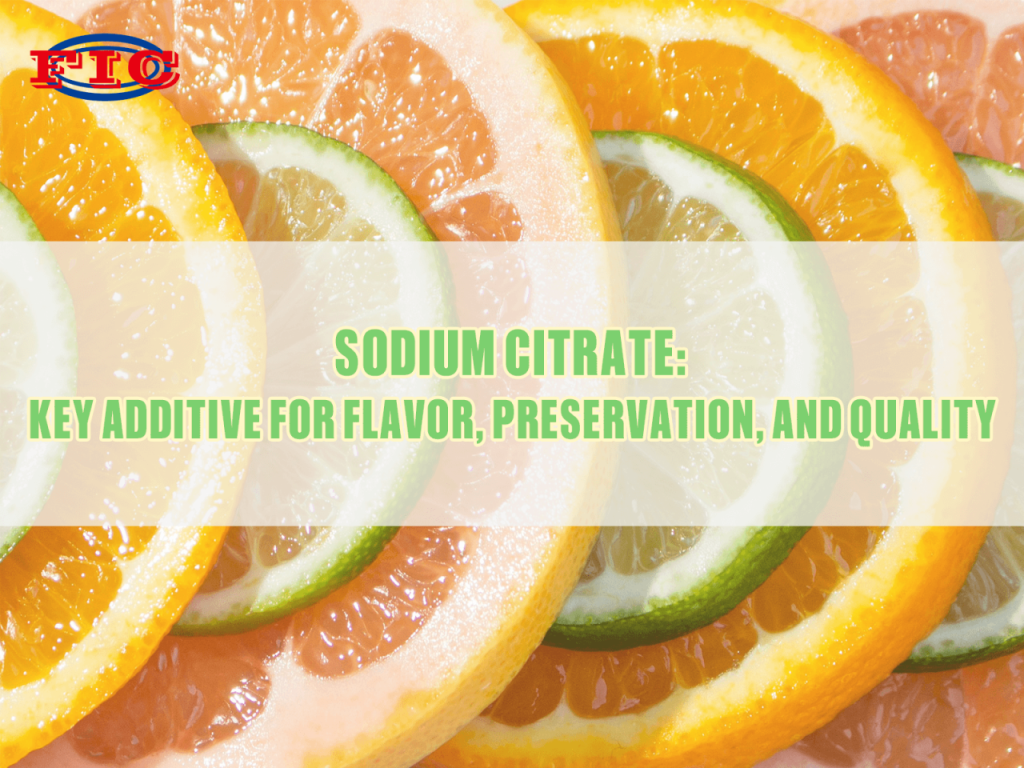Strengthening Partnerships and Expanding Horizons: Our Experience at the F Istanbul Exhibition

Strengthening Partnerships and Expanding Horizons: Our Experience at the F Istanbul Exhibition We are thrilled to share our recent participation in the prestigious F Istanbul Food Fair held in Türkiye. This event served as a pivotal platform for us to deepen relationships with our valued clients and forge new connections within the vibrant Turkish market. At the exhibition, we proudly showcased our extensive range of high-quality food additives products and demonstrated our commitment to delivering exceptional professional services. Our team engaged enthusiastically with attendees, highlighting our dedication to excellence and innovation in every interaction. The fair not onlyprovided us with a unique opportunity to strengthen partnerships […]
Emulsifiers: Essential Ingredients in Modern Food Production

Emulsifiers: Essential Ingredients in Modern Food Production Emulsifiers are vital components in food processing, serving as agents that help mix ingredients that typically don’t blend well, such as oil and water. They are crucial in creating a stable, uniform texture in various food products, ensuring consistent quality, and enhancing the overall eating experience. In this post, we’ll explore the role of emulsifiers in food, and delve into the characteristics and advantages of three key emulsifiers: polysorbate, lecithin, and glyceryl monostearate. Applications of Emulsifiers in Food Emulsifiers are widely used across the food industry to achieve several important functions: Stabilizing Mixtures: Emulsifiers help maintain the consistency of food products by preventing the […]
Ensuring Food Safety: Silica and Calcium Carbonate as Reliable Substitutes for Titanium Dioxide

Ensuring Food Safety: Silica and Calcium Carbonate as Reliable Substitutes for Titanium Dioxide Ensuring Food Safety: Silica and Calcium Carbonate as Reliable Substitutes for Titanium Dioxide In recent years, the food industry has increasingly focused on safety standards, particularly regarding the use of food additives. Titanium dioxide (TiO2), a widely used whitening agent, has come under scrutiny due to potential health concerns. As a result, the demand for safer alternatives has surged. Among the most promising substitutes are silica and calcium carbonate, both of which offer significant advantages in food applications while adhering to strict safety standards. Silica: A Versatile and Safe Additive Silica, also known as silicon dioxide, is […]
How the MSG is made

How the MSG is made MSG, chemically named sodium glutamate (Monosodium glutamate, MSG), is a white crystal or powdered substance with a strong umami flavor. Glutamate is a non-essential amino acid widely found in a variety of foods, such as tomato, cheese and meat. The umami flavor of MSG comes from the combination of glutamate and sodium ion, which enhances the flavor of the food and makes it more delicious. The production of MSG is mainly achieved through the fermentation process. This process usually involves the following steps: Raw material preparation: choose high-quality starch or molasses as the raw material. Fermentation: Under controlled conditions, use microorganisms (such as corynebacterium […]
Taurine: Applications and Market Prospects Analysis

Taurine: Applications and Market Prospects Analysis Taurine, a sulfur-containing amino acid derivative, has gained significant attention in recent years due to its diverse applications and promising market prospects. In terms of applications, taurine plays a crucial role in various fields. In the healthcare industry, it is widely used as a dietary supplement. It is known to have beneficial effects on the nervous system, helping to enhance cognitive function and reduce fatigue. Additionally, taurine has a positive impact on the cardiovascular system by regulating blood pressure and protecting heart health. In the field of metabolism, it promotes fat metabolism and aids in detoxification. The food industry also makes extensive use […]
Caramel Color : Enhance Your Products with Cost-Effective, High-Quality Colorants.

Caramel Color : Enhance Your Products with Cost-Effective, High-Quality Colorants. Introduction to Caramel Color Caramel color is one of the oldest and most commonly used food colorings in the world. It ranges from pale yellow-brown to deep dark brown, depending on the specific production process. Caramel color is produced through the controlled heat treatment of sugar or glucose, which leads to the characteristic dark, rich hue. Product Features Caramel color comes in four distinct classes (I, II, III, IV), each created with different processes and having unique properties. These include: Class I (Plain Caramel): Free of sulfites and ammonia, used in light-colored products. Class II (Caustic Sulfite Caramel): Contains sulfites, giving it […]
Sodium Citrate: Key Additive for Flavor, Preservation, and Quality

Sodium Citrate: Key Additive for Flavor, Preservation, and Quality Sodium citrate, a sodium salt of citric acid, is widely used in the food industry for its ability to act as a flavor enhancer, preservative, and pH regulator. Its versatility makes it an essential ingredient in many processed foods, beverages, and dairy products. The Main Role of Sodium Citrate in Food pH Regulation: Sodium citrate is commonly used to maintain the acidity or alkalinity of foods, particularly in dairy products like cheese. By stabilizing the pH, it ensures consistent texture and flavor. Emulsification: In processed cheeses and other dairy products, sodium citrate serves as an emulsifying agent, helping to prevent separation […]
The Role and Difference of Ammonium Bicarbonate and Sodium Bicarbonate in Water Treatment

The Role and Difference of Ammonium Bicarbonate and Sodium Bicarbonate in Water Treatment Water treatment is a crucial step in ensuring the safety and sustainable use of water resources. Ammonium bicarbonate (NH4HCO3) and sodium bicarbonate (NaHCO3) are two common chemical substances that play a key role in regulating water quality and removing pollutants as water treatment chemicals. Although they are similar in chemical structure, they have significant differences in their mechanisms of action and characteristics in water treatment. This article aims to explore the specific mechanisms of action, application scenarios, and the main differences between these two compounds in water treatment. Understanding their characteristics and mechanisms of action is essential […]








